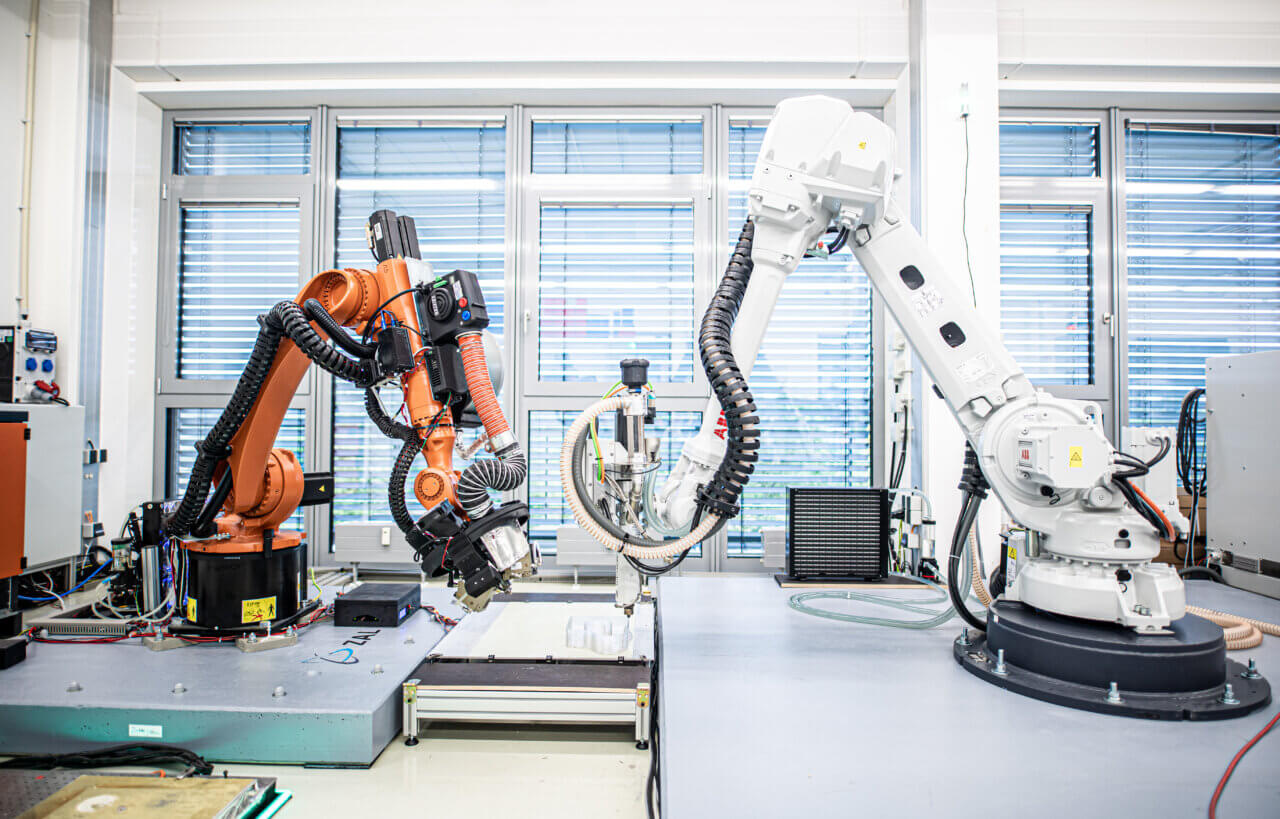What will the cabin components of the future look like? LiBio – Ligthweight Bionic Aircraft Interior – is a research project on robot-guided additive manufacturing (RAM), funded by the German Federal Ministry for Economic Affairs and Energy. An international consortium from Germany, Austria, and Canada is conducting joint research on the production of an aircraft cabin element. The aim is to jointly develop a forward-looking, sustainable, and functional design.
The consortium is working on a business class table. It is completely 3D printed and can be pulled out of the sidewall and folded out. Instead of a classic business class interior, e.g. with heavy leather seats, the international team is implementing a lightweight, bionic design, i.e. inspired by nature. At the same time, the experts are combining technical functions in the table to make it smarter: with a display, integrated conductor paths, and imprinted speakers. ZAL GmbH is paying particular attention to the challenges of 3D printing, such as the size of the table, and the integration of the various functions that the table is to offer.
How did the project arise?
In 2018, ZAL GmbH pitched the idea of the company iDS (also from TechCenter) at the RDV Forum in Montréal. The focus is on new designs for the aircraft cabin. It was decided to use the table as a central cabin element, which is used a lot and characterizes the cabin layout. With the other partners, the project became more and more technical, with many new functions added to the table. The LiBio consortium works closely together and is in constant exchange: all partners contribute their part to the project demonstrator and have their specializations.
What is the focus of ZAL GmbH?
The team at ZAL GmbH is working on RAM. To be able to implement several functions simultaneously as quickly as possible, it prints with two robots at the same time. The special feature is that particularly large structures such as the business class table can be printed with both robots. With a footprint of 1×1 meter, the table is very large for a 3D printing process. This is especially true when printing with technically demanding plastics, such as those commonly used in aviation. Until now, only a few printers have been able to reproduce this. The fact that both robots print together on the same component is new and unique – especially with two different robot brands.
Three main topics are in the foreground. The first is the loudspeaker. With questions like: How can you print a loudspeaker? What do you have to consider to make it sound well? And how do you conceal it in the table? The second topic is the manufacturing aspect: How do you get two robots of different brands to work together? And they do so while simultaneously working on a component and performing different tasks. At LiBio, since both robots are printing, because of their size, they have to coordinate who is working, when, where. 3D printing also presents challenges: at ZAL, the AM team is currently establishing granule printing, which opens up new possibilities in terms of materials, build rates, and part sizes. In contrast to the frequently used plastic wires, the team is therefore printing plastic beads. In the project, the engineers print technical plastics in an open laboratory and not commonly in closed, specified construction spaces.
What are the advantages of LiBio?
The advantages of LiBio and the associated insights are numerous: The cabin equipment becomes more space-saving and generally more functional. The components can be designed freely and individually. Materials and thus costs are saved during production, and the components become more functional at the same time. And – from the idea and a computer model to the real component, only a few days pass. This short process chain even applies to large components.
Outlook: What’s next?
RAM enables an automated manufacturing cell to print large individual components. Having robots guide different tools and perform many different tasks expands 3D printing. For LiBio, the AM team is also exploring robotic milling and imprinting on milled or existing components. Robots enable almost anything in terms of geometry, in terms of the motion. They can increase speeds or combine different processes. So with RAM, you can do a lot at the same time and do it relatively quickly.
Of course, sustainability is also a big issue. The AM team’s next step is to address the issues that sustainable plastics raise in the aerospace context.
Consortium:
ZAL, Fraunhofer IFAM, Bombardier, F-List, Antemo GmbH, CRIAQ, Fusia Groupe, Inocon Techonologie GmbH, Joanneum Research – Forschungsgesellschaft mbH MATERIALS – Institute of Surface Technologies and Photonics Laser and Plasma Processing, Queens Universtity – Structural and Multidisciplinary System Design Group, Rembrandtin Lack GmbH Nfg. KG, SinusPro, Solyxis Ingeniosite Manucafturiere Inc, Aerospace & Advanced Composites GmbH





